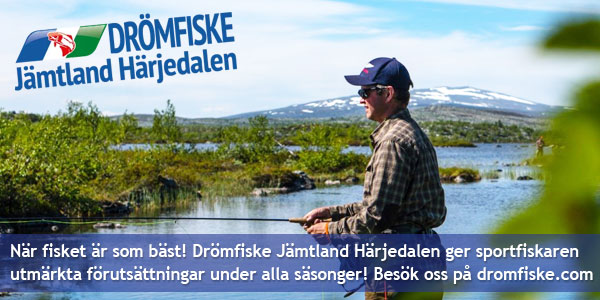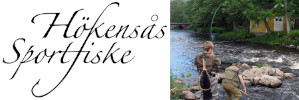Användarmeny
Fly fishing (two handed) Overview
Fly fishing (two handed)
A perfect fly fishing method if you have a lot of obstacles in bakkastet.
The Basics
The vast majority start with regular one-handed fly fishing and later want to develop even more. Then two-handed fly fishing often comes into the picture.
The usual image of two-handed fly fishing is that you stand in a larger river and fish for large salmon and trout, but there are more dimensions than that.
The technology differs a lot from the usual one-handed fishing. As the name suggests, you use two hands, another big difference is that the technology is most often used in such a way that you never have the whole line in the air, and never swing the whole line behind you. You start the throw with the line in the water and you end the throw with the line in the water.
When it comes to casting in two-handed fishing, the most common is the "Spey cast".
The Spey caste has several different branches and techniques, but we take the most basic.
The big advantage of the spey cast is that you can fish places with obstacles in the background that are difficult to access with regular throws. This is because the fly is never moved behind the fisherman, but instead only touches the water surface on the side. With the help of a large bow in the air, you use the friction of the water surface against the fly and the paw, to then elegantly transfer the power to a throw.
Cast description Spey:
You start by having the right length of line outside the outer track. If you are fishing with a Weight Forward (a line with a thick lump at the front), the entire lump must be outside the outer track.
- You lift the entire fly line out of the water with a light but accelerating movement.
- You turn the body and angle the rod obliquely backwards so that an arc is created on the line, a so-called "D-loop".
- When the fly, the paw, and a piece of the line touch the water just upstream of the fisherman, you have loaded the rod and line correctly to lay out the projection.
- With a controlled and determined acceleration, you move the rod forward and stop at about 2 o'clock to shoot out the line.
Equipment
The equipment does not differ significantly from the one-handed equipment.
Two-handed rods are usually in the higher classes (8-12), and the lengths are usually significantly longer than the standard length for one-handed fishing (9 feet).
Previously, two-handed rods only appeared among the heavier classes, but now they are also available in lighter classes, we are talking about so-called Switch rods.
A Switch rod is unique, and like a hybrid between one-handed and two-handed. They are available in low to high classes. Rods are not quite as long as a pure two-handed, but not as short as a single-handed, they are usually between 10-12 feet.
Switch rod looks like a longer one-handed, however, the rod also has a longer "butt" part, so the lower part of the rod has a cork handle so that you can use both hands. Given the design of Switch rods, it is thought that you should be able to use rods both as one-handed and two-handed, but also for smaller fish and in smaller waters.
The reels in two-handed fishing are larger to be able to take the coarser lines.
The lines for two-handed fishing are available in many different designs, you can fish with solid lines (DT) and WF (Weight forward).
Another line system that has become more and more popular is the "lump system", which simply means that you have a thin shooting line with a loop at the end of the tip. With this loop, you can connect different types of tips (lumps) to fit exactly the right fishing at the moment. It can be about different densities but also different tapering on the lump, ie how it is built up and where the greatest weight is distributed.
This system means that you do not have to carry lots of different ropes, you just replace the tips instead.







